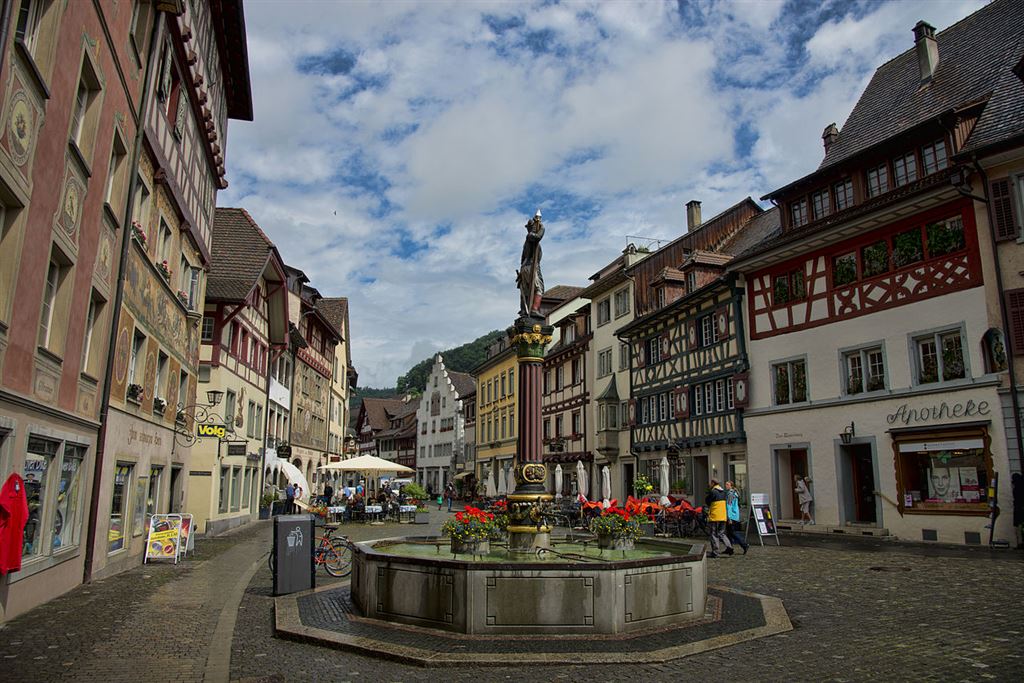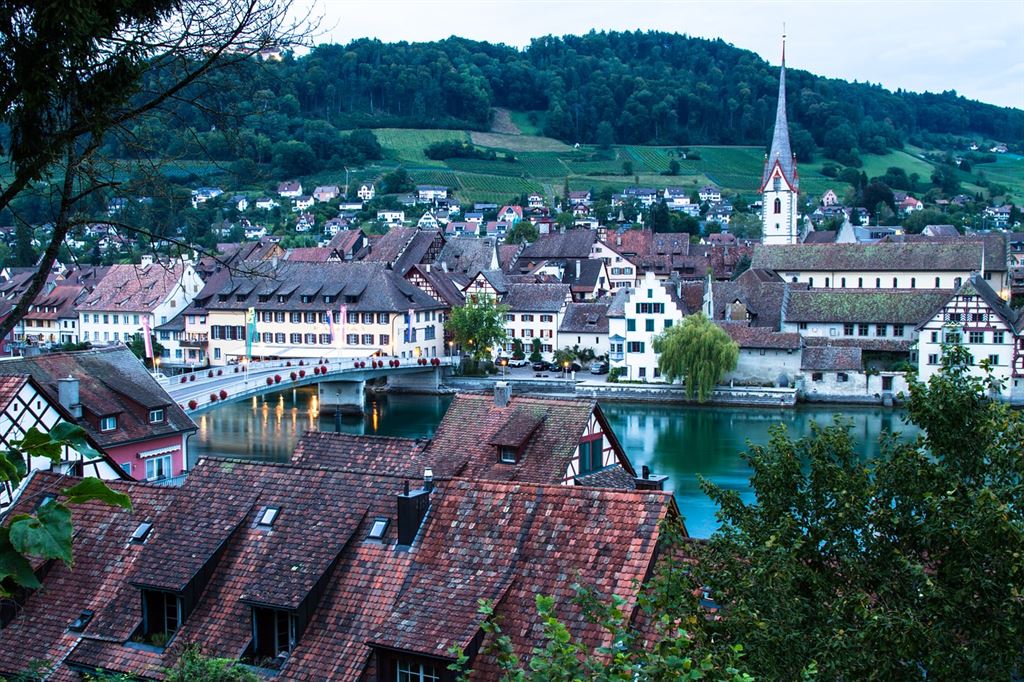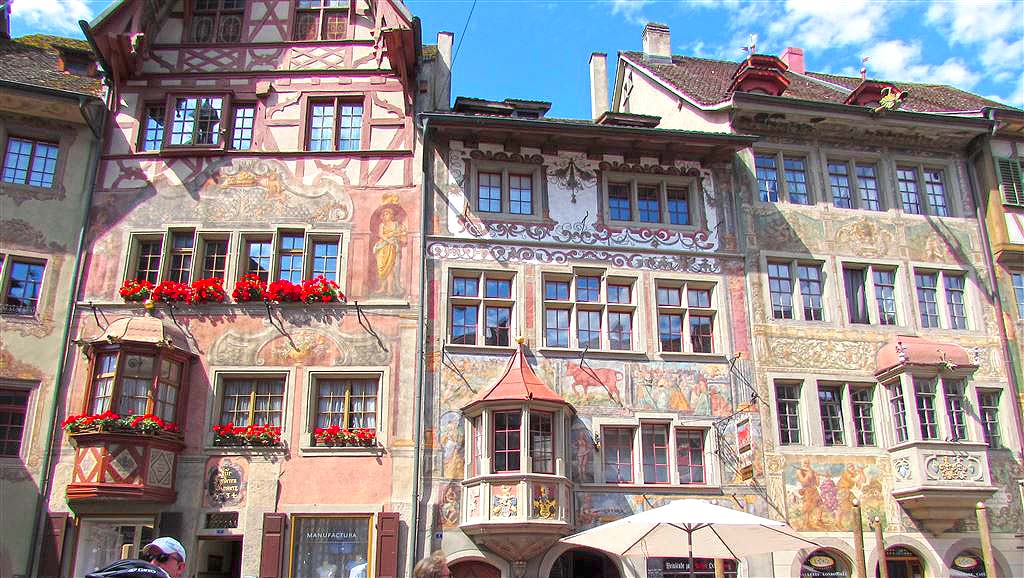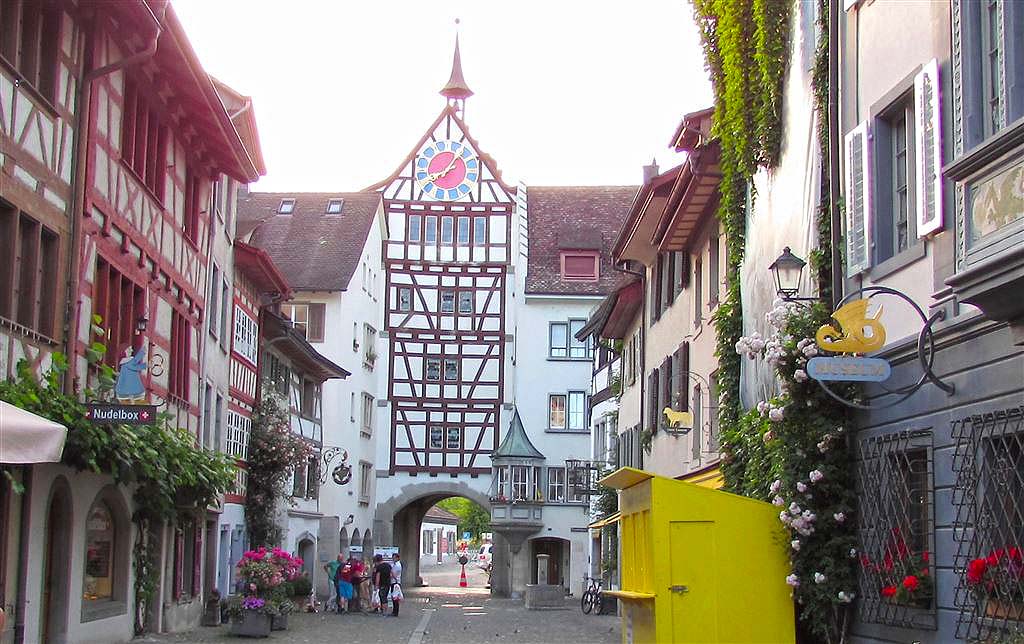
How do you start painting a place which you have never seen previously? That was the question I was asked when painting my first work: “The Swallow’s Nest” (a castle on the cliffs of Crimea), which I had never seen in my life. Nevertheless, it seemed as if I had been there in my dreams.
My artistic life began by creating something, or more specifically “somewhere”, that existed in my fantasy, not in memory. Literally, I started the painting upside down. One year later I visited an endlessly inspiring place sprinkled with art that elicited a strong desire to re-create it on a piece of canvas. The city was called Stein am Rhein, situated in the German part of Switzerland. The name of the city has an interesting interpretation. In German “stein” means “stone”; that is "stone on the Rhine." The city was called this because it was built at the intersection of the Lake Constance (Bodensee) and the River Rhine; the very part where a particular stone is located.

Stein am Rhein is a small medieval city founded around 1007. In the past, it was ruled by the Lords of Hohenklingen. Presently, there is the jubilant Castle Hohenklingen nestled on top of the hill. It can be seen from almost every corner of the city. Nowadays, the castle serves as a fine-dining restaurant, as well as, being one of the most impressive sites of interest in Stein am Rhein.
How My Journey Began
It all started like this...I was planning a journey to the Northern part of Switzerland and Liechtenstein. When thinking about Zurich and its surroundings, I started looking for charming little towns around Zurich and spotted this fairytale place, Stein am Rhein. The inspiring frescoes on the town buildings, enchanting view of the River Rhine, and the magical feel of the town were so inviting that I had to explore it by myself.
So in July of last year, I found myself in a fairytale. From the centre of the Canton Schaffhausen, I embarked on a cruise ship to Stein am Rhein. Filled with delightful expectations, I travelled back in time. That was my first feeling when I stepped into this fairyland. The Undertor, one of the three principal gates of the town was the first one to greet me on a beautiful summer evening. It was interesting to learn that in 1945 the gate became a Clock Tower. Moreover, during WWII it had been mistakenly thought to be in German territory and was destroyed by an American pilot. It was later reconstructed in 1946 to restore the City Walls.
The Wonderful Stories of Stein am Rhein
When walking through the lovely alleys of Stein am Rhein, I learned many diverting stories from the local guide. For example, according to one of the stories, the water from the river was not very clean in medieval times. So, when monks felt thirsty, they would drink wine. Since the wine was not too strong in alcohol, the monks even had a habit of drinking up to two litres of wine per day. It is worth noting that winegrowing was one of the major sources of income of the medieval Stein am Rhein.
Another story tells that there was a “Lane of Drops” in Stein am Rhein. Why drops and whose drops? According to the story, during the medieval times, the locals of the town could buy a beer from a barn. When taking their beer back home, the men might accidentally drop the beer on the lane and would cry hard tears because of that. Hence, the lane was called “The Lane of Drops”.
Stein am Rhein is really small for a town, and is pretty much just a village. Though it is small, it is filled with endless stories. Therefore, polishing your listening skills would be a good idea before visiting this town.
The Frescoes in the Old Town
Initially, the frescoes in the Old Town were painted with Italian lime paint. However, the weather conditions revealed this not to be a reliable material, as it would fade away under the influence of rain and sunlight. To correct this matter, the house owners repainted the frescoes with mineral materials. Distinguishing the buildings was accomplished through naming the houses with relevant themes like Rosenberg, House of Sun, and House of Vineyards. Presently, those buildings can be seen in the Town Hall Square: a true marvel of art.

During my evening walk through the town, I heard enthusiastic voices that excited me to go further. This directed me to a vigorous play of local artists on an open-air stage. As I found out later, those were active preparations for an open-air theatre based on the legend “No e Wili”. The legend tells the story of a nightly attack on Stein am Rhein and the mayor of the town who wanted to transfer the rights of the city to the neighbouring nobility. The locals of Stein am Rhein reveal that dishonesty and caused a riot to take a revenge of the swindler, the mayor.
I stood for a while to watch those exciting theatre preparations, then I walked towards the hotel to admire an evening view of the River Rhine and Lake Constance. The moon reflecting in the river, the gentle summer breeze swayed me away to a hypnotic state.
Stein am Rhein is a City with Enticing Soul
Stein am Rhein is a city with enticing soul and its soul is portrayed on the walls of the medieval town. Simply watching those fascinating frescoes will please your eyesight. However, to deeply plunge into its full realm and travel back in time is only possible by listening to the stories on each and every house. The cultural heritage of the town is huge considering the tiny size of the city.
Stein am Rhein has entirely conquered my heart with its tender grace.
Final note: To embrace the entire dignity and loveliness of the city, one should go up the hill and rejoice in the graceful scenery from the Castle Hohenklingen. Accompanying this with a delicious dinner and fine wines on the balcony of the castle restaurant would be a sublime delight.
